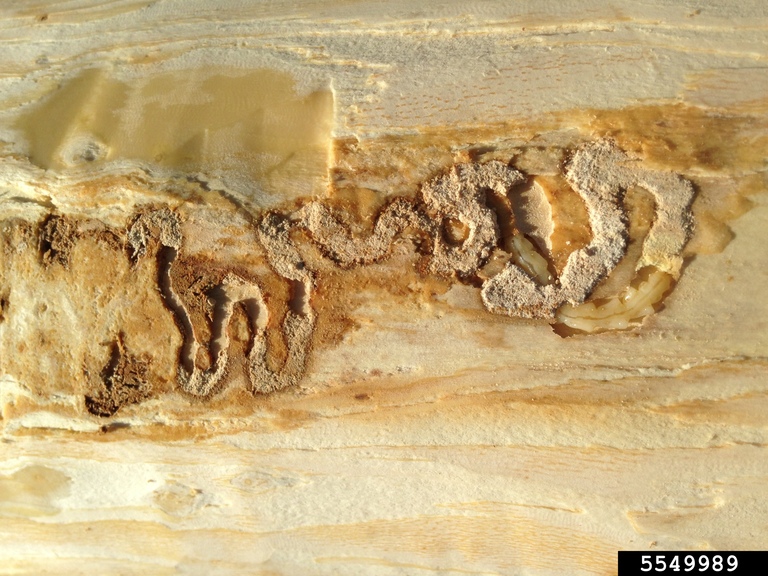Due to staffing responsibilities at the Delaware State Fair, the Poultry and Animal Health Section will not conduct fecal sample analysis until July 30, 2024. Contact your local veterinarian for their testing protocol in the interim. More Info
Emerald ash borer (EAB) – a destructive, invasive beetle that attacks and kills North American ash trees – was detected in a surveillance trap in New Castle County in 2016. In 2018, the Department began to find larger populations of this invasive pest in both New Castle County and Sussex County. While ash comprises only around two percent of Delaware’s tree stock, some areas have a higher concentration and are more likely to be impacted. Communities where ash is considered to be a nice looking, large street tree will likely be impacted. Trees attacked by the emerald ash borer die within a few years of colonization. Now that EAB is here, it’s important for homeowners and municipalities to take steps to respond to the potential effects of EAB on their community tree canopy. State forestry and plant health officials are providing advice to those who may have questions.
Read the Emerald Ash Borer Fact Sheet
Read the Ash Treatment Decision Guide

The emerald ash borer is a small, green beetle that belongs to a large family of beetles known as the buprestids, or metallic wood boring beetles.
Emerald ash borers can travel to new areas by natural means, as well as on firewood, timber and nursery stock. The emerald ash borer feeds under ash tree bark during its larval stage, which damages and eventually kills the trees. Adult EABs emerge and the spring and mate shortly thereafter, with each female laying 60 to 90 eggs in a lifetime. In the spring, pupae transform into adults and emerge through “D”-shaped exit holes.
Symptoms of an EAB infestation may not be apparent immediately, with damage taking up to three years to be visibly detectable. Symptoms can include branch dieback in the upper crown, vertical bark splits, and small shoots (epicormic branching) on the trunk, as well as woodpecker damage.
Native to Asia, EAB was unknown in North America until its discovery in southeast Michigan in 2002. EAB has now spread to 35 states, Washington, D.C., and five Canadian provinces. Since then, EAB has killed millions of ash trees, with numbers rising every year.
The potential for damage is very high. A previous study by the U.S. Forest Service once estimated that the ongoing EAB infestation could have an estimated cost of $10.7 billion nationally. In Delaware, ash trees are relatively minor components of the native forest, found mainly in streamside areas and flood plains. In some urban areas, ash is the predominant large street tree.
Symptoms of an emerald ash borer infestation may not be apparent immediately, with damage taking up to three years to be visible. Symptoms can include extensive branch dieback in the upper crown, sparse foliage, vertical bark splits, mushrooms on the trunk or branches, small shoots (epicormic branching) on the trunk, as well as woodpecker damage. For a visual understanding of the signs and symptoms, watch this video from the Outsmart Invasive Species Project.

Ash tree bark and leaves:

We encourage homeowners to consult a certified arborist for a tree health inspection; visit www.isa-arbor.com to search for ones near you. Trees that look fine or do not have EAB may have other health issues.
Trees already infested with EAB are treatable if the damage is not severe. Trees with more than 50 percent canopy loss will likely not recover. In some communities, removing infested trees may be mandatory.
We encourage homeowners to consult with a certified arborist for a tree health inspection; visit www.isa-arbor.com to search for ones near you. A certified arborist can help you determine the best treatment option.
Removing an ash tree and planting another species recommended by the Delaware Forest Service is an alternative to chemical treatments. Immediate removal is not necessary as long as the tree is in good health. Trees outside of an infested area may live for many years. As you look to replace trees, make sure to diversify your selection. Many broadleaf trees are available as replacement for ash. Check out the Delaware Forest Service’s recommended trees list for details.
Trees that are not recommended because they are known to develop serious issues with pests or diseases include ash; northern red oak; pin oak; leyland cypress; hemlock; Japanese black pine; Austrian pine; any white-barked birch; American elm.
Trees that should not be planted because they are invasive and can displace native vegetation include Norway maple; tree of heaven (ailanthus); paulownia; mimosa; white mulberry; Bradford pear; and Chinese elm.
Delaware is already included in a federal quarantine with 35 other states and Washington, D.C. that restricts the interstate shipment of all ash wood and wood products – ash nursery stock, green lumber, waste, compost and chips – as well as hardwood firewood of all species. Some shipment out of state may be permitted if certain requirements are met and a federal permit is issued.
Firewood is a prime avenue for emerald ash borer to travel between states. Get more details at Don’t Move Firewood.
Call the Delaware Department of Agriculture at 302-698-4500 and ask for either the Plant Industries Section or the Delaware Forest Service.
Delaware has been working to monitor for emerald ash borer infestations since 2004, using both visual surveys and baited traps that attract the insects. Grant funding from the U.S. Department of Agriculture has supported both monitoring and forest pest outreach efforts. DDA staff members have worked to educate civic associations, municipalities, forest health professionals, and land managers about the importance of planning and how to look for and report suspicious pests.

Related Topics: emerald ash borer, honeybees, plant, plant industries, plants, trees